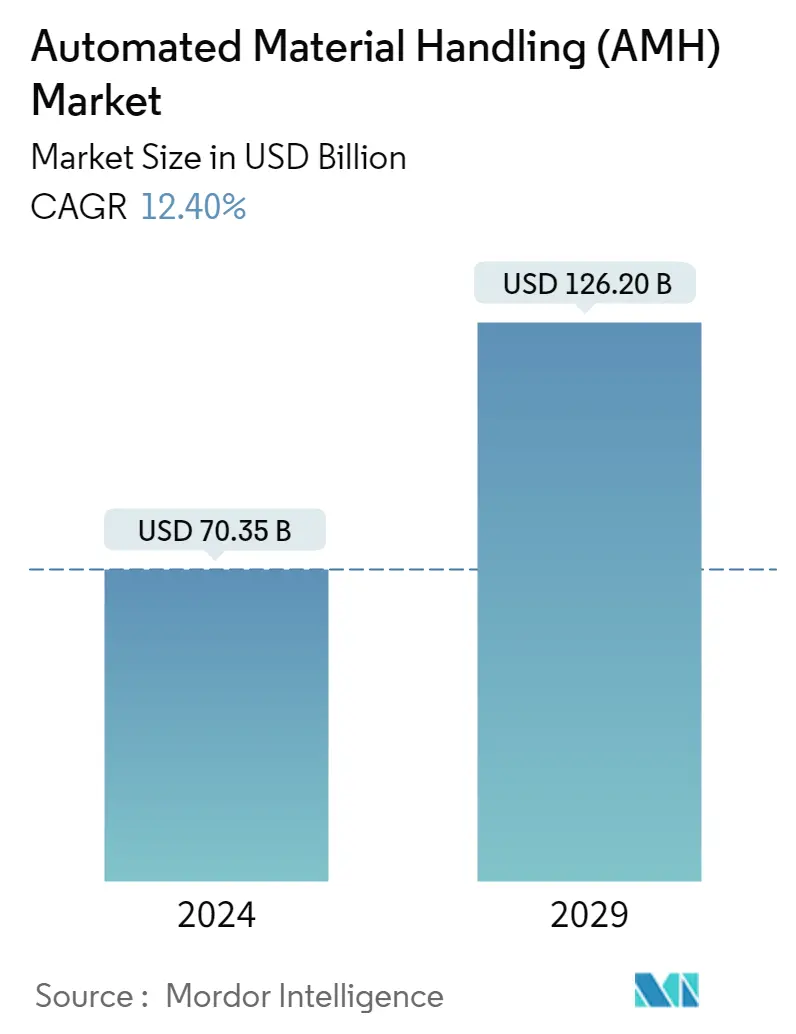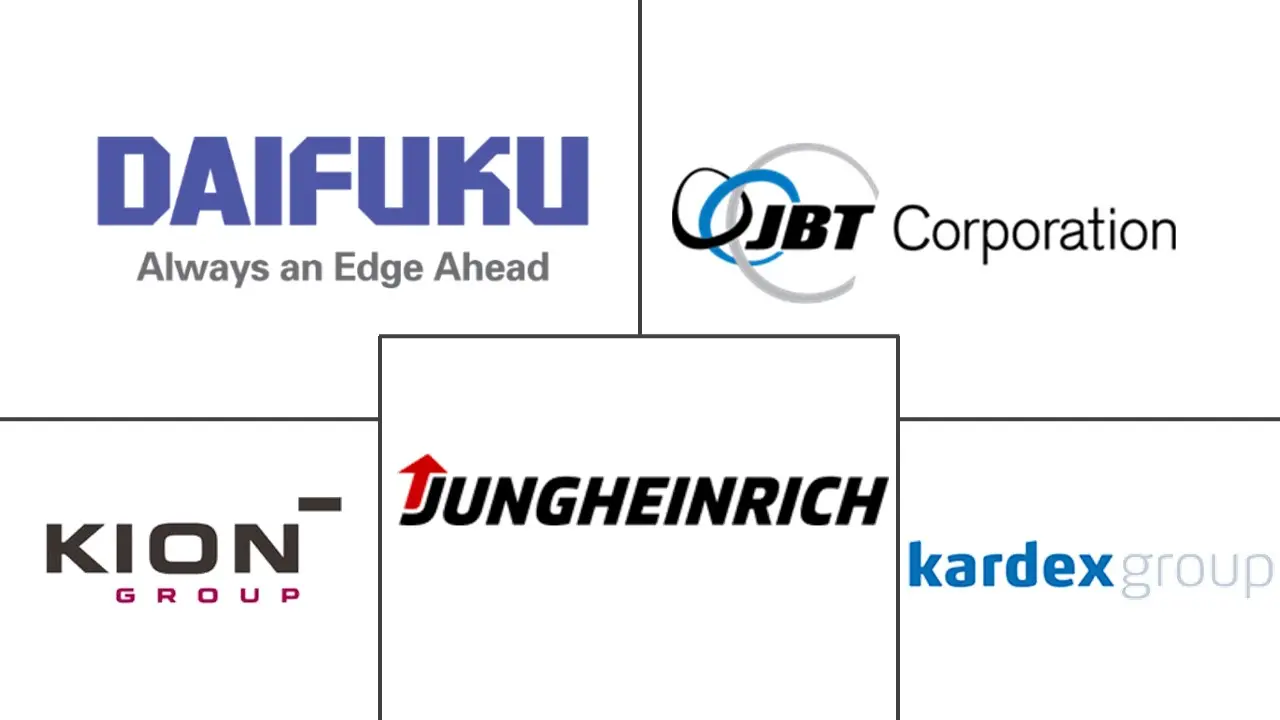Market Size of Automated Material Handling (AMH) Industry

| Study Period | 2019 - 2029 |
| Market Size (2024) | USD 70.35 Billion |
| Market Size (2029) | USD 126.20 Billion |
| CAGR (2024 - 2029) | 12.40 % |
| Fastest Growing Market | Asia-Pacific |
| Largest Market | Asia-Pacific |
Major Players
*Disclaimer: Major Players sorted in no particular order |
Need a report that reflects how COVID-19 has impacted this market and its growth?
Automated Material Handling (AMH) Market Analysis
The Automated Material Handling Market size is estimated at USD 70.35 billion in 2024, and is expected to reach USD 126.20 billion by 2029, growing at a CAGR of 12.40% during the forecast period (2024-2029).
The rising technological advancements, rising labor costs and safety concerns, rising efficiency and productivity of manufacturing and warehouse operating companies, a significant recovery in global manufacturing, growing demand for automation in industries, rising demand for robots in manufacturing units and warehousing facilities, and rising emerging markets are just a few of the key factors driving the growth of the automated material handling market. Additionally, throughout the projection period, the global automated material handling market would benefit from the expanding digitization of supply chain operations. This expansion will be complemented by increasing order customization and personalization.
- Automated material handling (AMH) systems help efficiently transfer materials to different places in the manufacturing area, warehouse, retail shops, airports, distribution, and logistics centers. These systems help transfer materials from one place to another within the same bay, department opposite manufacturing ends, or between two separate buildings. An AMH system uses a route or path provided by the Manufacturing Execution System (MES). Material identification is made by these vehicles using optical character recognition (OCR), barcode, RFID, ultra-wideband indoor tracking, and near-field communication for locating the position of materials.
- Over the last 70 years, material handling has undergone various transformations that have changed the industry's outlook. Material-handling machines and robots have replaced individual workers. Owing to this transformation, many industries have grown, especially the automotive industry, which has experienced a 10-fold growth.
- Industry 4.0 innovations and next-generation manufacturing capabilities developed in Canada are changing the way products and components are designed, delivered, and maintained across various industries and climate conditions. Robotics, automation, and technologies like additive manufacturing (3D printing) have a wide range of applications in Canadian industries, such as e-commerce, automotive, agriculture, and pharmaceuticals. Canadian innovators are producing a comprehensive range of technologically complex, increased-value products for domestic and competitive global markets, sharing enhanced practices and laying the groundwork for collaborations that shape the future of advanced automation technologies.
- Although the first form of AGV was used in 1953, AGVs have been mostly unable to gain widespread adoption across all the production/warehousing firms due to several mitigating factors (cost being a significant factor impeding growth). The average price of a typical guided vehicle is expected to be around USD 60,000-100,000. At the same time, an integrated system equipped with navigation aids, sensors, safety equipment, and communication components could be much more expensive. The high initial prices and maintenance issues continue to have an adverse impact on the market studied. Major companies have concerted efforts to keep the total costs in check while ensuring that innovation and R&D activities remain unaffected.
- The COVID-19 pandemic complicated the situation of automation adoption in various sectors. It has changed the standard operating procedure by bringing in unique challenges of social distancing and contactless operation. Organizations were forced to limit their workforce and deal with the increasing demand. The COVID-19 outbreak has infected several workers in the United States since 2020, leading companies on the front lines to implement new safety processes. While the spread of the virus has been severe enough to warrant shutdowns, for instance, food production facilities, multiple other businesses have been able to continue operations with the addition of new health measures.
